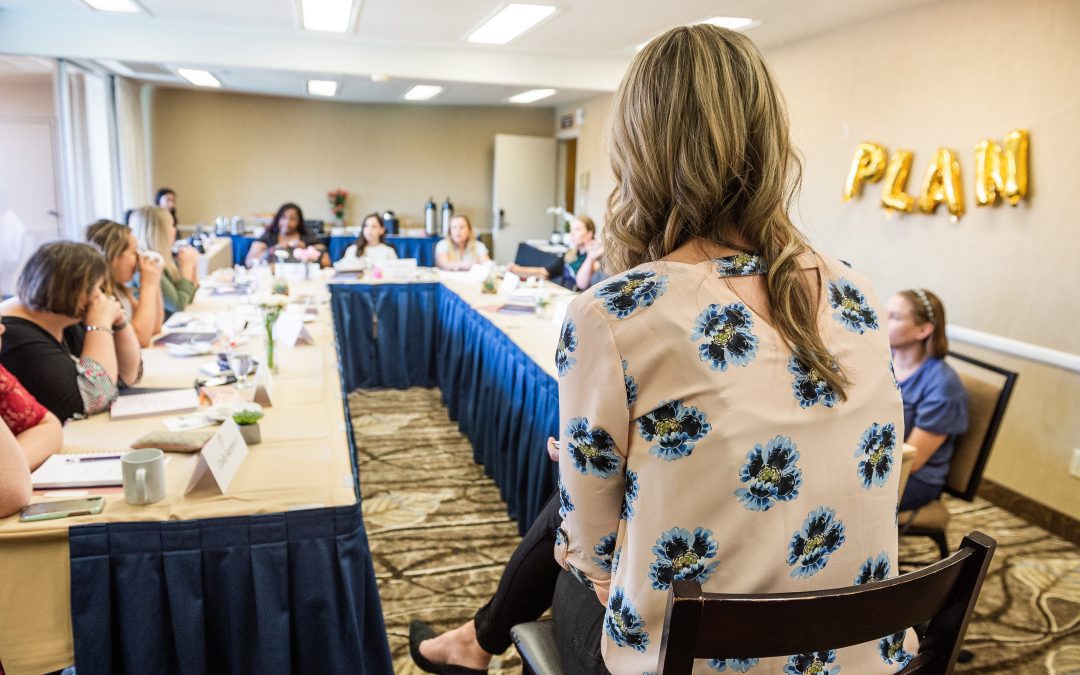To connect successfully with people around you, you need to master the secrets of body language. Whether you’re in an elevator, walking down a corridor, interviewing for a new job, or networking after work, your body language will speak volumes for you. Communications expert Judith Humphrey provides four tips for ensuring your body language sends the right messages.
The 4 Most Important Staples of Professional Body Language
1. Stand and Sit Tall
We project confident leadership when we sit and stand up straight. But because of habit, socialization, insecurity, or fatigue, we sometimes do just the opposite. We unknowingly make ourselves smaller by rounding our backs, lowering our heads, and crossing our legs. This behavior does not serve us well.
Just imagine that you’re at a job interview, and you slouch and look down at the table. Your body will be saying, “I’m not sure I’m confident enough for this role.” Or when you’re about to answer a question, you fold your arms in a self-protective manner, implying that you have to take a defensive position. Avoid those subliminal messages.
Here’s how to develop a stance that projects power and leadership:
-
Be as tall as you can be.
-
Hold your head high, with chin tucked in.
-
Keep your shoulders square: don’t hunch or slouch.
-
Keep your arms open and loose at your side, available for gestures.
-
Keep your legs uncrossed and planted firmly on the ground.
2. Lead with Gestures
Your gestures can also convey leadership and strong conviction. The key is to have open gestures that indicate you are confident and comfortable with others. If you approach a potential mentor at a networking event with folded arms, for example, you’ll look insecure. Instead, approach by extending your hand, introducing yourself, and using your arms and hands during the conversation to gesture.
To achieve this openness:
-
Keep your arms open, never crossed or folded.
-
Gesture with your full arms toward your audience.
-
Avoid forearm or wrist gestures – they are less strong.
-
Keep your hands open, not clenched or folded.
Gestures can be a powerful way of building a relationship with your audience.
[RELATED: 3 Body Language Habits of Successful Women]
3. Use the Power of Your Eyes
Eye contact is another aspect of body language that can serve you well.
Begin by using your eyes to study your audience, whether it’s one person or many you’re talking to. By looking at them you not only show that you’re listening to them, but you can make sure you’re getting your message across. If your listeners seem distracted or confused, slow down your pace or bring more expression to your delivery.
Second, use your eyes to drive home each point. You don’t need to look at the people you’re talking to 100 percent of the time. But at the end of every sentence or idea, make eye contact that silently says, “Did you get that?” So, for instance, if you’re in the elevator and you say to your boss, “I’m enjoying the challenges of project X,” hold your eye contact until he responds.
Third, use your eyes to “own the room.” Our eyes often go to the ceiling, the walls, the table, and even the door when someone walks in. This “walkabout” with our eyes disconnects us from our audience. The secret is to stay attuned to the people you’re talking to. And focus on one person at a time.
4. Put Your Best Face Forward
Finally, get your facial expression right.
Speak with a warm, empathetic face. Nobody will follow you if you look like you don’t care about them. This warmth cannot be “put on.” It must be genuinely felt. It’s reflected in a smile, but not a big, happy smile. It’s more of an inner smile, a radiance in your whole face that projects enthusiasm, energy, and a positive attitude.
Also, keep your face unobstructed and available to your audience. Women sometimes hide their faces when they feel self-protective, but that weakens their presence. So,
-
Don’t let your hair hang in your face.
-
Don’t touch your face or rub it.
-
Don’t hold your face in your hands.
-
Don’t turn your face away from your audience.
-
Don’t drop your face when speaking.




